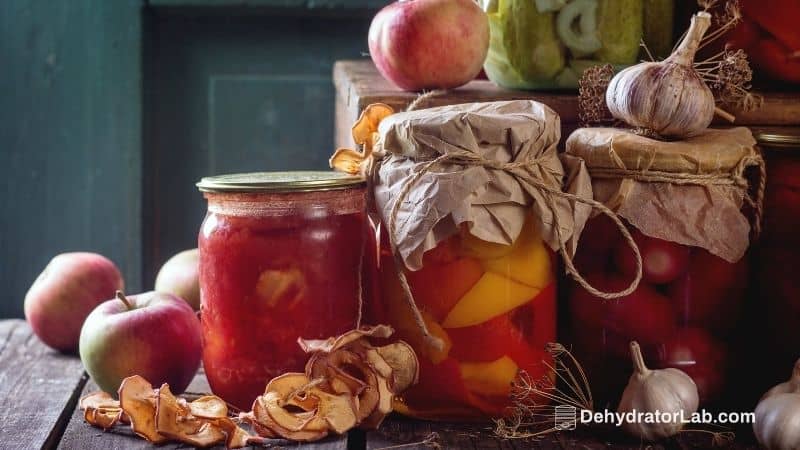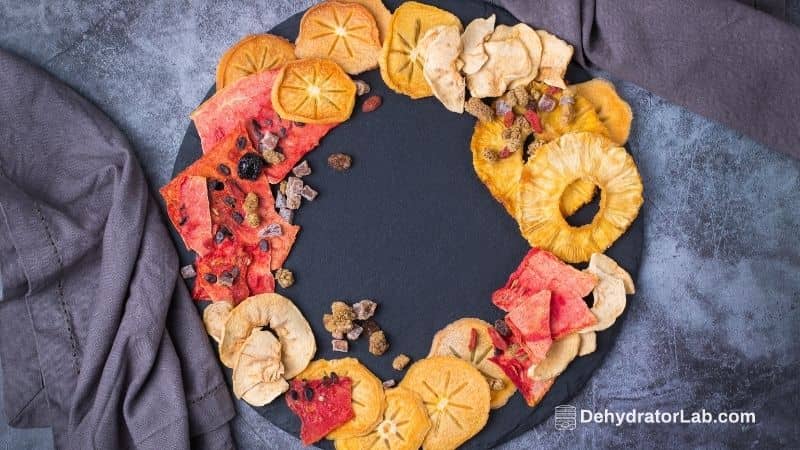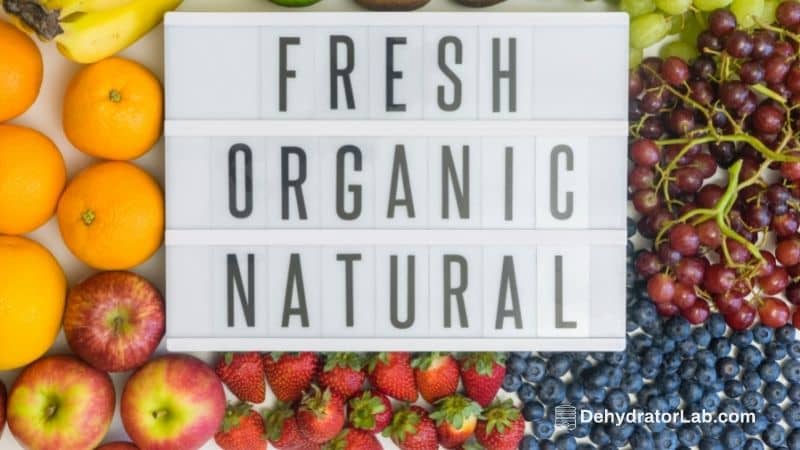Ever wondered where the heck food preservation started from? For a clear picture of the history of food preservation, let’s take a walk-through on the timeline of some of the methods during the ages, so that you can appreciate some of the milestones that have been overcome and see how food preservation has changed over time.
We are going to give you a blow by blow account of how it all begun, we will look at the different ages, from the oldest method of food preservation to the newest, what methods were most common during the ages to see if there has been an improvement with time and how it has evolved from an basic method to a highly technological superior one.
As time went by, there was more research and innovation, which gave birth to a horde of new, efficient, and easy-to-implement techniques.
New food preservation methods have been discovered or improved from their older models over time. The traditional methods, such as smoking, have been improved with electronic smoking, while sun drying has been modernized to electronic dehydration.
Other food conservation methods were invented, for instance, there was the invention of pasteurization and irradiation, among others.

When Was Food Preservation Invented?
As a way of ensuring food security by man, this process has been there from the earlier centuries to current times.
In this article:
12,000 BC: Sun Drying – The Oldest Method of Food Preservation
The oldest method of food preservation has its roots way back to 12.000 B.C. and it is the simplest of all – sun drying
Sun drying is the oldest method of preservation and it is the most dominant one during the prehistoric period. Simply put, items were left in the sunshine to dry. Folks at that time used sun drying as a method of food conservation but it didn’t guarantee longevity. This method depended solely on nature, which couldn’t provide an effective way of preserving food.

It is one of the earliest methods used by prehistoric man to preserve his food. It began in the arid and semi-arid areas around 12.000 bc and has been used to dry large quantities of foodstuffs and fruits such as figs.
The technique is still being used in some parts of the world while others have moved on to other modern methods that are convenient and comfortable to use such as the dehydration method.
It involves the spreading of food items under the sunlight so that there is evaporation of the water content found inside it as a result of heat from the sun.
This prevents bacterial growth, because up to eighty percent of the moisture is removed. Also, the weight is reduced to a fifth of the original and its volume reduced to half.
The main advantage of this mode of food preservation is that it only requires sunshine, which renders it an inexpensive.
The food tho didn’t dry uniformly thus retained moisture, which acted as a setback to the whole process unlike modern methods. Moreover, tedious and inconveniencing, spoilt the flavor and taste of food and were not environmental friendly.
Some other of the disadvantages are that it requires lots of time for the products to be adequately dried and it becomes nearly impossible to use during bad weather or inappropriate climatic conditions among other factors.
Besides, it is a labor-intensive practice that requires to be done for a considerable period. It also needs constant monitoring to prevent loss due to weather changes and requires the constant rotation of the food for uniform drying to take place.
Since the method removes two-thirds of the water content, the resultant foodstuff gains a tough and chewy texture.
Ancient Sun Drying Alternatives: Communities found in the Polar Regions covered their foodstuffs under ice to preserve them.
500 BC: Jam
Jam and jelly were popular in the preservation of food and fruits during this period. The ancient Greeks and Romans discovered that immersing foodstuffs inside honey would maintain them.

Though not known how its making started, jam has been used since the time of the merchants in the preservation of fruits. It came out as a result of traders turning their rotting fruit into something useful instead of waste.
In the first known cookbook: De Re Coquinaria (The Art of Cooking) which dates from the 1st century AD there is also the first recipe for jam, which in the simplest form was heated fruit with sugar.
Over-ripen fruits were pulverized and juice squished from them then boiled down and sugar added to produce jam.
In modern times, an element known as gelatin replaces pectin found out in the fruit juice to produce a product that has a smooth texture.
This method was majorly used in the northern climates which experienced insufficient sunlight to dry fruits properly.
Other than that, honey which is a close associate of jam was used by the ancient Greece and Romans to improve the texture of their foodstuffs.
1400 AD: Curing
It was discovered that storing food inside salt solution (brine) would increase its longevity during the middle age.
Ancient cultures such as the Egyptians and Romans included, they used the salting method, but like all the other all methods, this method as well was proved to be ineffective in the curing and storing of meats.
The origin of the curing method of food preservation is around 1400 AD.
Pieces of meat were submerged in salt (sodium chloride) solution otherwise known as brine. This triggers a process known as osmosis, which causes the transfer of water content from the meat into the salt solution.

Furthermore, the brine kills the bacteria found in the meat thus effectively sterilizing it and also slows down the oxidation process which usually makes foodstuffs to become rancid and unpalatable.
Addition of sodium nitrate was also found necessary as it improved the appearance of meat by giving it a red color and kills bacteria.
This method was mostly used by soldiers going to war during the earlier periods but proved insufficient, since the food didn’t last for long before going bad. Moreover, offered little nutritional value and caused frequent outbreaks of scurvy.
These downsides caused the likes of Napoleon to invest heavily in the finding of better food preservation methods for their armies. These lead to the invention of new techniques such as canning and pasteurization which have proved to be a significant advancement in the food preservation efforts.
1784 AD: Refrigeration
With the invention of technologies such as freezing and refrigeration, people started preserving their foods using them.

Freezing as a method of food preservation started way back from the ancient times. Communities preserved their foodstuffs under ice or outside during winter periods.
Holes or small sheds were created on the ground and stuffed with wrapped meat, which was then covered with snow or ice. As a result, the beef froze thus reducing the enzyme and bacterial activity to a minimum thus preserving and preventing it from tasting rancid.
The first time for this technique to be used on a commercial level was in the year 1842, but did not get bigger (large scale preservation) until the nineteenth century with the start of mechanical refrigeration.
The meat freezing process depends on the type. For instance, you can place your pork in your freezer straight away from the slaughterhouse.
Other types of meat such as beef need to be hung preferably in a cooler for it to be tenderized before being frozen.
On some occasions, the quality of the preserved food will depend on the time taken between the preparation of food and its placement on the freezer.
For instance, some foodstuffs like fish which are usually frozen slowly and may indicate the loss of some liquid known as the drip. In other cases, foodstuffs such as eggs will get their yolks coagulated.
The benefits of frozen food include the near preservation of the original form of the product, unlike other methods that cause some changes in the food. It also has a wide usage on a variety of foods.
Some of the flipsides regarding the freezing method are that not all the types of food bacteria are killed. They therefore seize the opportunity to grow at a faster rate after the food has been thawed.
It is advisable to heat your vegetables and fish before freezing them to preserve their flavor and killing of the cold-adapted bacteria found on the outer surface respectively.
Also, the process can cause the water inside the food to expand, thus destroying or disrupting the cell structure of the stored food depending on the type of freezing method used. For example, if you use quick-freezing, there will be less damage due to the small crystals formed.
It is a more expensive preservation method than others considering the electricity cost, hence making the price of the frozen commodities to go up.
On the other hand, refrigeration as a preservation method came about after continuous research during the technological era. It involves the use of a cold storage also known as a refrigerator working under the principle of the second law of thermodynamics to get their work done.
It preserves foodstuffs such as fruits, raw meat, and vegetables by storing them inside their compartment. The low temperature inside the machine slows down the growth of microorganisms.
The downside of this technique is that it only preserves your food for just a few weeks at max. For you to prolong the storage, you ought to place them inside the freezer that immobilizes bacterial growth.
1809 AD: Canning
With the discoveries by the French inventor Nicolas Appert and Englishman Peter Durand, a new method of storing food inside containers was introduced.

This method was started by a French scientist known as Nicolus Appert who had been placing food in glass jars and heating them up to sterilize them even before Pasteur’s discovery.
His jarring process was adopted by another French inventor who was based in the US which culminated in the start of canning as a method of food preservation.
A patent of the tin can was first bought by a businessman Bryan Donkin from a French inventor Philippe Girard at the cost of one thousand Euros. He then reworked it for two years for mass production and partnered with another person to form Donkin and Gamble, and started producing canned beef.
It involves the storing of food in sterilized containers that have a negative pressure in the inside.
First of all, the food is placed inside the container and heated to higher temperatures. Then tightly fitting lid is added to the can when the temperatures are still high, and the oxygen molecules expanded.
This action creates low pressure inside the container when the foodstuffs cool down, which prevents the growth of microorganisms which are the leading causes of food going bad.
Although a superb method that can preserve foodstuff for extended periods, it cannot guarantee the same success across all the different regions. For instance, canned food can last up to fifty years in the arctic areas, but takes a few years in the tropics.
1871 AD: Pasteurization

This method was invented by a French scientist by the name Louis Pasteur, who identified the relationship between microorganisms and the spoilage of food.
This technique of food preservation is named after the famous French scientist Louis Pasteur in the year 1856. It was not used even after its first experiment in 1962 until the start of the twentieth century.
In 1918 this method was dwelt upon in the USA by a scientist known as Alice Catherine Evans after her bout with brucellosis and the discovery that the disease is caused by a bacterium known as Brucella found in a cow’s milk.
These sparked an interest and it was discovered that apart from brucellosis, milk caused other diseases such as Salmonella, E.coli, and Listeria, which are infections and life-threatening to all. Therefore, pasteurization was made compulsory in the US law in the 1930’s after being advocated for by Evans.
On the flipside, it is a not so common method outside dairy products since it destroys the taste and flavor of the food.
1940 AD: Dehydration
Challenges such as the ever-changing weather patterns and lack of enough food supplies majorly contributed to the invention of the food dehydration method.

It has its beginnings in the 1940’s that involved the drying of a handful of products that could be easily getting dehydrated. For instance, milk, eggs, yeast, coffee, and soup or even honey.
Food dehydration is an improvement of the sun drying method. They both involve the removing of moisture from the food. The main difference is that the former uses electrical energy and is carried out by food dehydrators.
This method came into good use during world war two and can be credited to two France inventors known as Masson and Chollet.
They successfully dehydrated vegetables at a temperature of one hundred and five degrees F. It was a favorite preservation method among the soldiers during the world war two, whereby they were able to carry light forms of dried foods to the battlefront for their sustenance.
After that, more scientific research and innovation was done leading to the production of sophisticated models that could virtually dry out anything with little ease and at a lesser period.
Food dehydrators have their benefits, which include efficiency and convenience. You can dry your food in the least time possible at own time. The process isn’t labor intensive and does not need closer supervision since some models are in cooperated with timers that turn them off automatically.
Additionally, it helps preserve 90 percent of the minerals which is rear among the other forms of food preservation.
Another kind of dehydration is freeze drying whereby a vacuum is retained over a special compartment containing the frozen food until all the water content is sublimed by careful application of heat thus denying the bacteria and microbes a medium for growth.
Like the original form of dehydration, foodstuffs coming out of this process are light in weight and require minimal space for their storage. They don’t require refrigeration for their upkeep and must be rehydrated before they are used.
Some of the downsides include the cost of purchasing and running the machine. It requires the purchase or replacement of accessories from time to time, and it utilizes electricity, which means you have some bills to foot, unlike the traditional sun which is available free of charge.
Otherwise, it is an excellent way of preserving your food that can be used on a daily basis or taken out during camping or hiking due to its lightweight.
1945 AD: Vacuum Packaging
During this era, it was discovered that storing your food in vacuum sealed containers would prolong its stay.
There was an introduction of specially designed and vacuum packages and sealers that ensured airtight conditions.

In the 1940’s a German inventor by the name Karl Busch came up with what is known as the vacuum pack meant for the storage of food. Vacuum storage has had a vast usage during the Second World War where soldiers carried vacuum sealed food to war fronts.
It involves the storing of food inside special malleable bags using vacuum sealers. The first vacuum sealer to enter the market was in the year 1963. They use the concept of first removing the oxygen content from the bags containing food then sealing it. Without the presence of oxygen, bacteria cannot grow hence preserving your food.
New vacuum sealers are an improvement of the ancient types. Older types utilized large vacuum nozzles, together with industrial level heating bars which were massive thus comprising the quality of the work. Most of the food used to go bad even before reaching the consumers.
These new age machines are designed with digital systems and gas filling capabilities. Other than that, they give you a wide variety to choose from. For instance, you can select the double vacuum chamber, thermoforming vacuum sealer or any other.
More brands have come out, such as the food saver, Vacmaster and others, and can offer you a choice depending on your needs; be it industrial or personal use. For example, you can have the automatic belt vacuum sealer or the thermoforming for industrial use.
1905 AD: Irradiation

The discovery of the x-ray in 1895 by the German physic Wilhelm von Roentgen signified a new milestone in the field of food preservation. It is at the same period that another physicist known as Antoine Henri Becquerel came up with the concept of radioactivity. This idea was utilized in the food preservation in a process known as food irradiation.
In the year 1905, the U.S and the British submitted their first patents concerning the use of radioactivity in the process known as ionization to kill bacteria. It was to provide sterilized food to their troops after the discovery that meat and other foodstuffs could last long after being bombarded with high energy.
In 1950’s the U.S army began a series of experiments to determine if the method could fit foodstuffs such as meats, vegetables, dairy products, and fruits, and in 1958 the FDA an organization concerned with evaluation of foods gave a clean bill of health for the irradiation process to foods such as pork, poultry, spices, fruits and red meat.
In 1980, it was found out that the irradiation of food to the range of 10 kilo grays posed no microbiological or nutritional problems. Furthermore, in the year 1999, the world health organization found out that the only hindrance concerning high doses of irradiation was the palatability of the food and not its safety, thus making it a similar method to cooking.
In 1986 The FDA gave the go-ahead of mass usage of irradiation as food preservation method. It has been highly used in the processing of foodstuffs for the America’s astronauts, who have consumed the meals since the times of the Apollo astronauts while on the moon and during flight. It has been heavily used in the production of irradiated smoked turkey, pork, beef and corned beef for the astronauts.
These are just some of the conventional food preservation methods that have been there since the prehistoric period. There are other methods such as fermentation among others that can be used to keep your food for extended periods.
2000+ AD: Chemical Preservatives
This method involves the use of additives such as vinegar to kill bacteria and microbes that cause decomposition. It also inhibits enzyme activities, thus ensuring extended food lives.

The use of chemical preservatives dates back to prehistoric man, who preserved and enhanced the flavor of his meat by smoking for those who lived in caves or placing it water for those living near oceans.
With the advance of years, some preservatives and additives such salts, sugar, salt and other kinds of spices started being used. It was found out by early man that generous amounts of sugar could preserve fruits and spices could make up for bad taste in rotting foods.
This food preservation method acts by preventing bacterial growth and unwanted changes such as oxidation without affecting the quality and taste of the food.
For instance, we have the use of vinegar which penetrates the food items and replaces the water content in a process known as pickling. This environment proves too harsh for any microbial growth, thus efficiently sterilizing your items.
Stronger chemicals such as Alcohol (methanol) are used to conserve samples and artifacts.
The downside of this method of preservation is that some people are reactive to some of the preservatives. For instance, they can cause, sneezing, skin rashes, stomachaches, difficult breathing to sensitive people.
Why Should Food Be Preserved?
After gaining some knowledge about the history of food preservation, you may be tempted to ask or question yourself, “is it essential?” Hell yeah! Food preservation helps in some ways, which include:
- Saves you tons of money:
You may have bought your foodstuff in plenty due to an offer or they are in season, and you are now wondering where the rest would go after your family has had their fill.
Preservation comes in handy as it will spare you the agony of throwing away the food. You get to preserve it for future use and in so doing saving you some bucks, which you could have used to replenish your food store shortly.
- Protects your good health:
Poorly stored food in most cases store dangerous bacteria that could be harmful to your body. A good preservation method ensures that your food is fit for consumption whenever you need it.
This saves you the hassles of visiting your doctor or spending huge chunks of money on medicine. In overall it helps you maintain bustling health.
- Maintains the food nutrients:
Food staying on its own without preservation undergoes oxidation. This process makes food to become rancid. Also, bacteria and microbes thrive under such conditions thus destroying any nutrients found on the food.
Modern dehydration methods conserve a percentage of these essential elements, with dehydration conserving up to 90 percent of the minerals and vitamins. This is an impressive figure that cannot be ignored.
Conclusion
Overall, food preservation is an old practice that started in the prehistoric times. The initial forms were time wasting and labor intensive. But with time, there have been continuous improvements, and the current methods have become practical and convenient to use.
We also learn that some old methods are still in use today such as sun drying, chemical preservatives, and jam preservation. It is a matter of choosing what way is suitable for your purpose depending on your needs, money and other factors such as your body reactivity to them.



